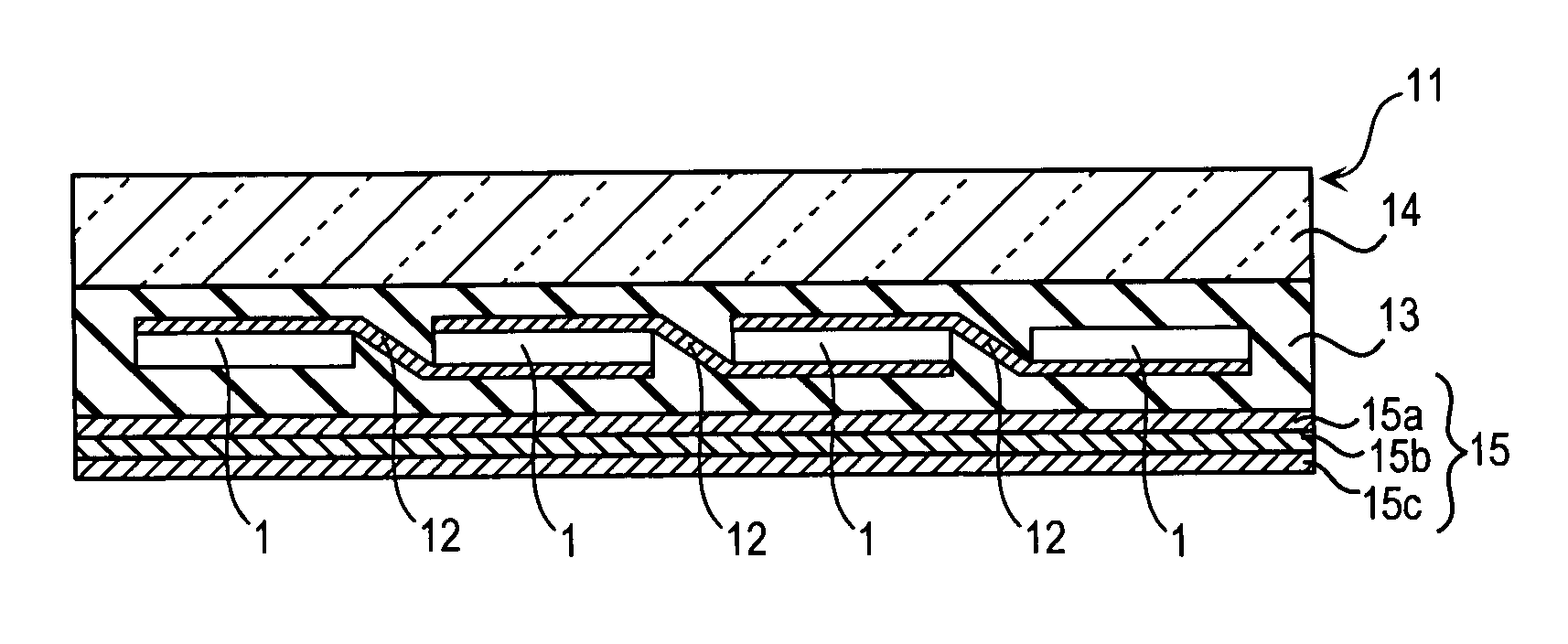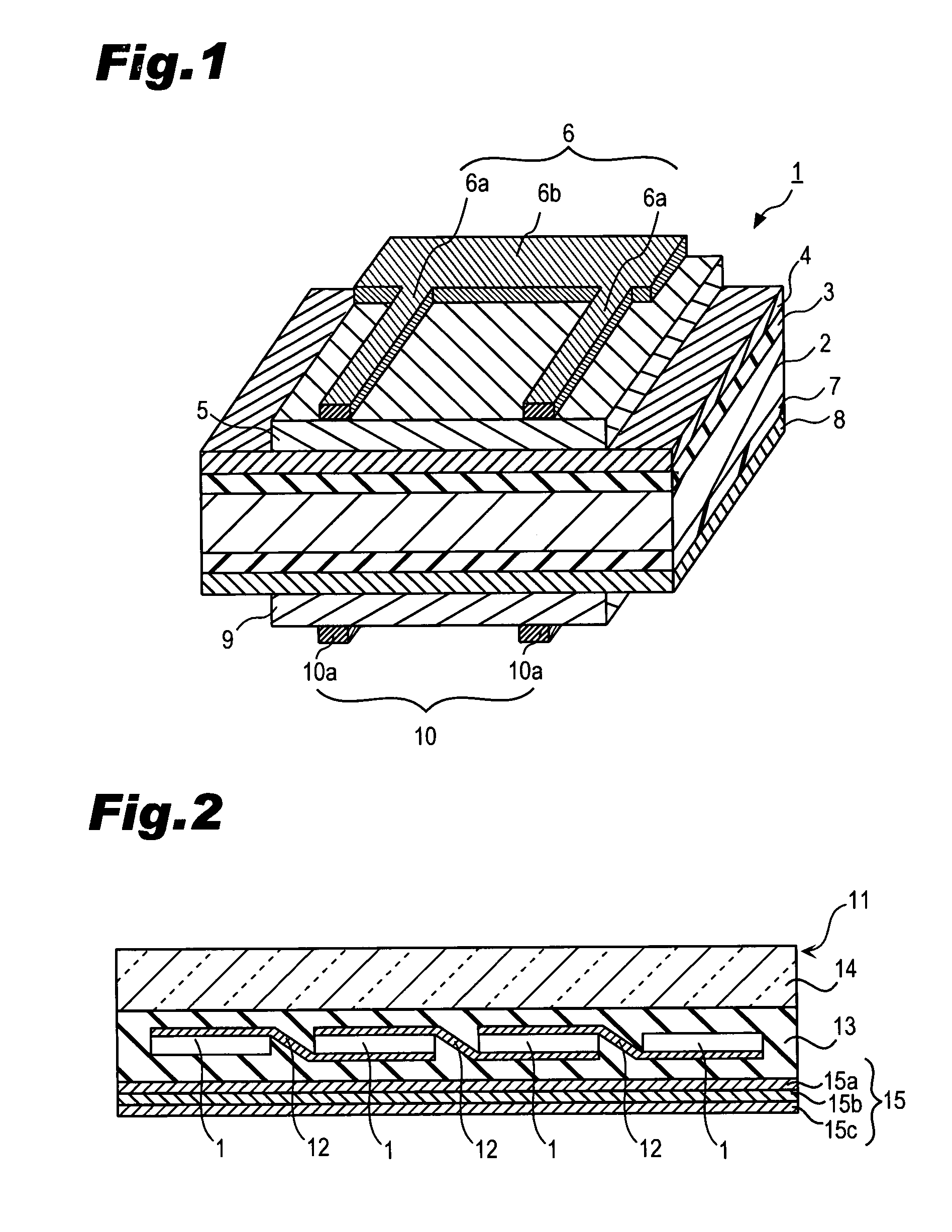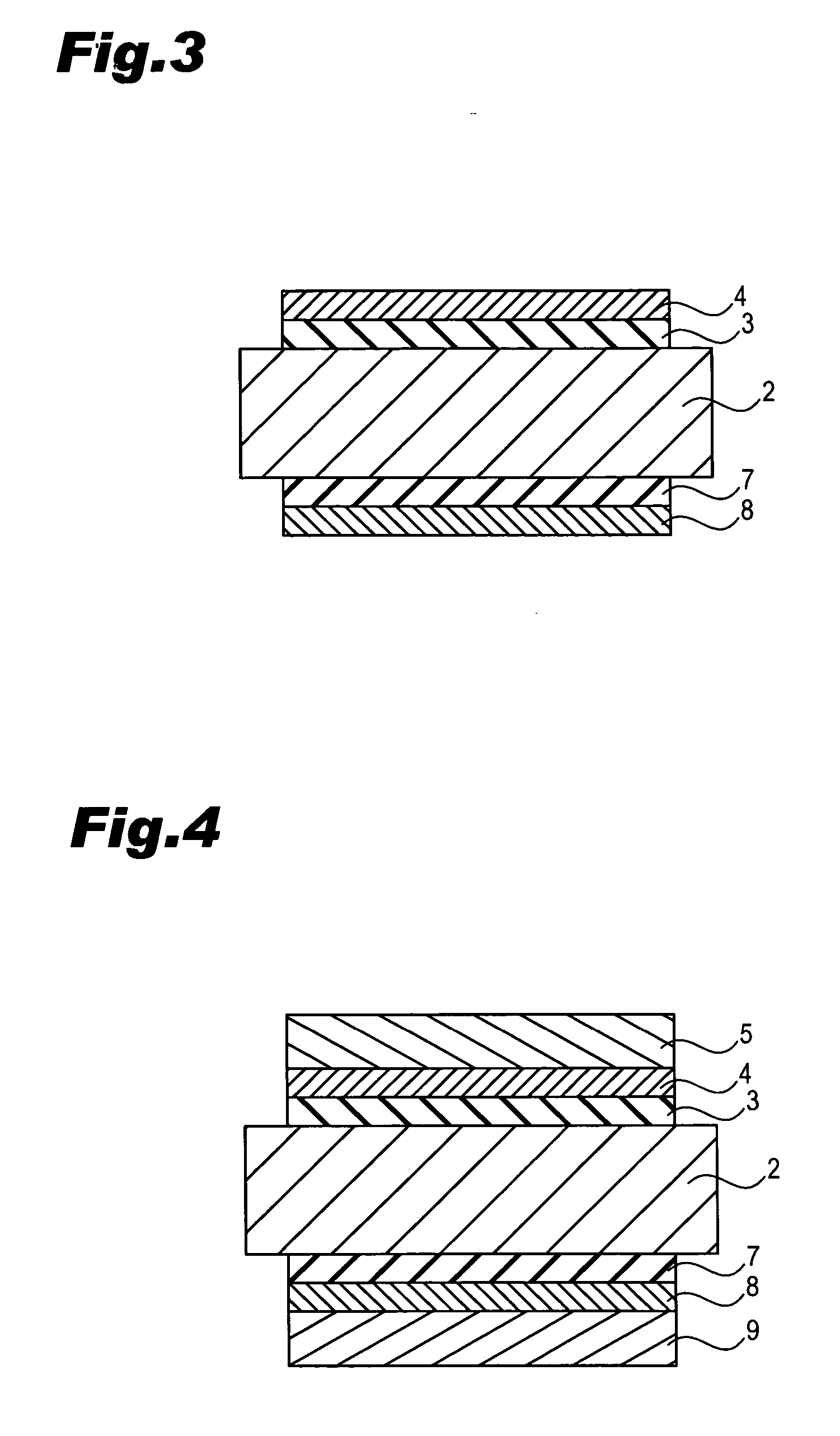Solar cell module
a solar cell module and module technology, applied in the field of solar cell modules, can solve the problems of reducing the adhesion, increasing the melting point reducing the adhesion, so as to improve the moisture resistance of the solar cell module, and prevent the electrodes from being deteriorated.
- Summary
- Abstract
- Description
- Claims
- Application Information
AI Technical Summary
Benefits of technology
Problems solved by technology
Method used
Image
Examples
embodiment 1
of Second Solar Cell Module
[0117] In this embodiment 1, solar cell modules were prepared with variation in compound ratio of epoxy resin, which was a material forming collector electrodes, for Examples 1-1 to 1-5 and Comparative examples 1-1 to 1-5. On each solar cell module, a temperature cycle test, a dump heat steady state test, and an evaluation test of insulation performance were conducted.
example 1-1
[0118] The solar cell element 1 is as same as that shown in FIGS. 1, 3 and 4. That is, as described above, a substantially intrinsic i-type amorphous silicon layer 3, a p-type amorphous silicon layer 4 are subsequently formed on an n-type single crystal silicon substrate 2.
[0119] In addition, an ITO film 5 is formed on the p-type amorphous silicon layer 4. A collector electrode (paste electrode) 6 is formed at a predetermined region on an upper surface of the ITO film 5. The collector electrode 6 is comprised of an electrically-conductive filler made of silver (Ag) and thermosetting resin. The thermosetting resin in the collector electrode 6 contains epoxy resin at ratio from 70% to 100% by volume. If the ratio of the epoxy resin in the resin binder is less than 100%, other resin component in the resin binder is all urethane resin.
[0120] On a lower surface of the n-type single crystal silicon substrate 2 formed are an i-type amorphous silicon layer 7 and an n-type amorphous silico...
example 1-2
[0152] In Example 1-2, resin material containing 70 vol. % bisphenol-A epoxy resin and 30 vol. % urethane resin is used for the conductive paste (silver paste) to form the collector electrodes 6 and 10. Except for this, the solar cell module of Example 1-2 is fabricated as in Example 1-1.
PUM
 Login to View More
Login to View More Abstract
Description
Claims
Application Information
 Login to View More
Login to View More - R&D
- Intellectual Property
- Life Sciences
- Materials
- Tech Scout
- Unparalleled Data Quality
- Higher Quality Content
- 60% Fewer Hallucinations
Browse by: Latest US Patents, China's latest patents, Technical Efficacy Thesaurus, Application Domain, Technology Topic, Popular Technical Reports.
© 2025 PatSnap. All rights reserved.Legal|Privacy policy|Modern Slavery Act Transparency Statement|Sitemap|About US| Contact US: help@patsnap.com



